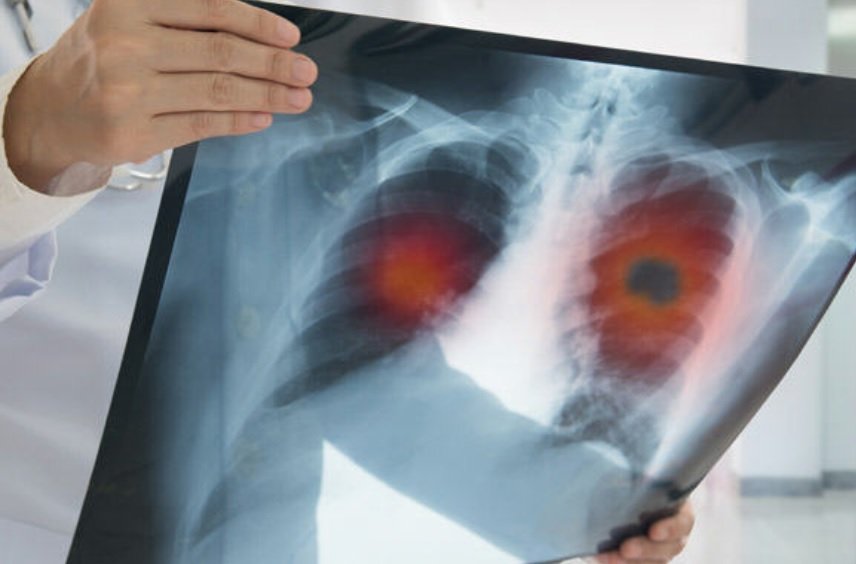Every year on our planet, more than a million people fall victim to lung cancer. This disease is one of the most dangerous malignancies, and the number of patients is growing.
Key Stats:
- More than 50% of the diagnozed cancer patients are actually residents of well-developed countries.
- Usually, lung cancer patients are over the age of 60.
- Lung cancer is the most prevelant form of cancer among men according to worldwide data. While for women, it ranks as the second most common type of cancer.
During lung cancer, malignant tumors form in the lungs, arising from the cells that outline the bronchi. These tumors generally grow quite rapidly and lead to multiple metastasizes forming. People living in big cities are at a greater risk of developing lung cancer than those individuals who live in sparsely populated places.
This is primarily due to the amount of pollution that is common in the air for big cities. However, pollution is but one of the many potential causes of lung cancer. In this fact sheet we’ll investigate some of the main causes of this deadly disease.
Smoking
Lung cancer is commonly associated with smoking cigarettes. The prevalence of lung cancer up until the mid 20th century was quite low. However, its growth in subsequent periods has been associated with the increase in the number of smokers that have been emerging after tobacco products became widely available and marketed.
Currently, in 90% of lung cancer cases, the patients were reported to be longtime smokers. Heavy smokers have a higher chance of developing the disease than lighter smokers. In scientifc terminology the risk from tobacco smoking is therefore “dose-dependent”. Second and even third-hand carcinogens from cigaratte smoke may also pose health risks.
Cigars and pipes have also been noted to increase risk of lung cancer, however, the risk is about 20% lower when compared to cigarettes (due to lower inhalation). Also, menthol cigarettes, which have traditionally been marketed as “lighter” cigarettes, do not pose a decreased risk of obtaining cancer. As a matter of fact, menthol cigarettes are even more likely to cause cancer than regular ones. Due to the tobacco in menthol cigarettes being inhaled deeper than that of regular cigarettes. Cigarette smoking is the primary cause of lung cancer in the world today.
Vaporizers

Vaporizers, or vapes for short, are essentially electronic cigarettes. Currently, they are becoming increasingly more popular with young people around the world. Vaporizers use a heating element that heats a liquid containing nicotine, the liquid evaporates when it has been heated up to a certain degree. Sellers of vaping liquids claim that the liquid is harmless and contains only glycerin, food flavoring, and a bit of nicotine. However, the vaping liquid is not subject to any regulations and are not tested for quality compliance.
Recently, in the United States, a study was conducted and proved that prolonged use of vapor liquids and electronic cigarettes can increase the risk of lung cancer. As a matter of fact, the glycerin and additives that are used in vaping liquids can cause lung tissue to become inflamed, which can lead to cancer. However, scientists suggest that the negative effects of e-cigarettes and vaping liquids will be seen more clearly in about 10-15 years.
Nevertheless, the risk of lung cancer associated with vaping appears to be at least somewhat lower than that of traditional cigarette smoking.
Passive Smoking
Inhalation of tobacco smoke by non-smokers is considered to be passive smoking and is a recognized risk factor in the development of lung cancer. Studies have shown that second-hand smokers are over 20% more likely to develop lung cancer.
Genetic Predisposition
Numerous studies have shown that lung cancer is more common in individuals with relatives that have previously been victims of cancer. Therefore, a genetic predisposition, namely the presence of the nicotinic acetylcholine receptor in the DNA, significantly increases the risk of non-small cell lung cancer.
Chronic Chest Diseases
It has been proven that chronic obstructive pulmonary diseases (COPD), prolonged and frequent pneumonia, pulmonary fibrosis, and other chronic inflammatory diseases of the lungs can lead to an increased risk of lung cancer. It is recommended that people with chronic respiratory ailments undergo frequent medical checkups.
Air Pollution and Bad Ecology
Polluted air containing industrial emissions, exhaust gases from vehicles, fine dust and other contaminants significantly increases the risk of lung cancer. Approximately 5% of clinical cases of lung cancer are directly linked to the inhalation of polluted air for prolonged periods of time.
Workplace exposures to certain chemicals can also increase the risk of disease.
Treatment
The main treatment for lung cancer is surgical intervention. The extent and magnitude of lung cancer surgeries are determined after analyzing the patient, the tumor in the lung, and its prevalence. After surgical treatment, lung cancer patients may require chemo or radiotherapy as well as immunotherapy treatments.
Conclusion
Researchers believe that by 2040 lung cancer infection rates may practically double due to the aging population. Therefore, it is crucial that individuals watch their health closely and avoid smoking, maintain a proper diet, and stay happy.



